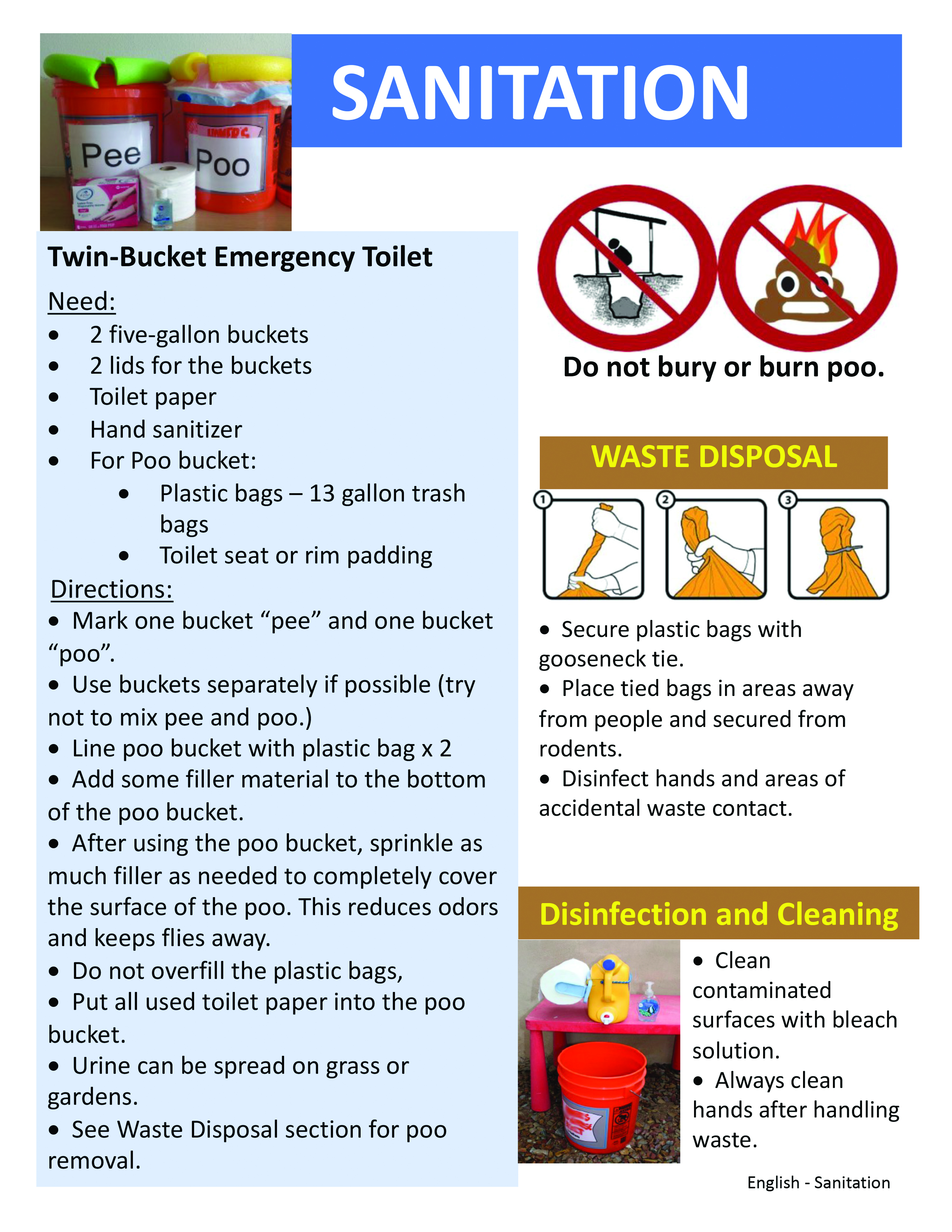Perhaps you remember Tarō Gomi’s 1970s bestselling children’s picture book, Everyone Poops, featuring illustrations of all manner of animals relieving themselves, creating squealing delight for most children, along with consternation for some adults. In today’s world it’s common to see people dealing with dog poop and the consternation is when poop has been left behind. Once human animals are out of diapers and “potty trained” we take for granted that toilets will manage our human dung.
Except when they don’t, like when an earthquake results in no water supply for flushing. Water will be a precious commodity following a serious earthquake; it can’t be wasted on human waste, except to wash our hands after managing our make-shift toileting setup.
Did you know that one of the top two causes of mortality after a natural disaster is life-threatening dehydration from diarrhea caused by fecal contamination of water, food, cooking implements and your own two hands? That’s the impetus for having knowledge and supplies to manage our poo and pee in a sanitary fashion. Even if you have a camping toilet handy, you will still need to know how and where to empty it to prevent the spread of disease.

Essential knowledge to remember
We move our bodily waste along with a variety of euphemisms: #1 and #2; pee-pee and poo; and a few others perhaps not suitable to print. Whatever you call it, here are essential points to keep in mind when you don’t have access to a functioning flushing toilet.
• Manage your poo and pee separately.
• Do not bury or burn poo.
• Set up a disinfection and cleaning station.
Simple twin bucket toilets
Even if you have access to a camping toilet, try not to mix pee and poo. A twin bucket system makes the best emergency toilet.
Supplies needed: two 5-gallon buckets; pool noodles (or 2 toilet seats); several boxes of 13-gallon kitchen garbage bags; lots of toilet paper; several bags of kitty litter (alternately, store a shovel to collect and use dirt from your yard.)
Create two makeshift toilets from the two 5-gallon buckets by cutting a pool noodle to fit around the top lip of each bucket. These pool noodles are your comfy toilet seats. Mark one bucket for urine (pee bucket) and the other for bowel movements (poop bucket). Separating pee and poo makes each of them easier to handle and helps eliminate the worst odor.
According to Phlush (Set Up and Use Your Emergency Toilet - Phlush ) an average day’s pee has 10 times the volume of poop but getting rid of it isn’t difficult. When you urinate, use the pee bucket but place any toilet paper you use in the poop bucket. Take the pee bucket outside and spread the urine on the ground in an area larger than your shadow. Urine contains salts that can harm some plants so spread it over a wider area.
Line the inside of the poop bucket with TWO plastic garbage bags. Poop doesn’t take up as much space and you can use this poo bucket several times before emptying. In fact, it’s recommended that you cover each new addition of poop with a little garden dirt, fireplace ashes or other natural material to reduce the odor and speed the decomposition. Don’t use cat litter as the clumps can have sharp corners and pierce the plastic bag. You don’t want to let any poop escape because it contains most of the pathogens that make people sick. Once the poop bag is half full, remove both bags, squeeze out the air, and tie them off tight. Store this bag outside in a secure container and the City of Seattle will pick it up eventually. Keeping it in your garbage can, recycle bin or compost bin will keep the rats and other vermin from feeding on the protein in your poop and spreading disease.
Use a sanitation station
Disinfection and cleaning is a critical part of staying healthy. You’ll want to set up a place with hand sanitizer, and ideally some water and bleach. Always clean your hands after using either of your buckets.